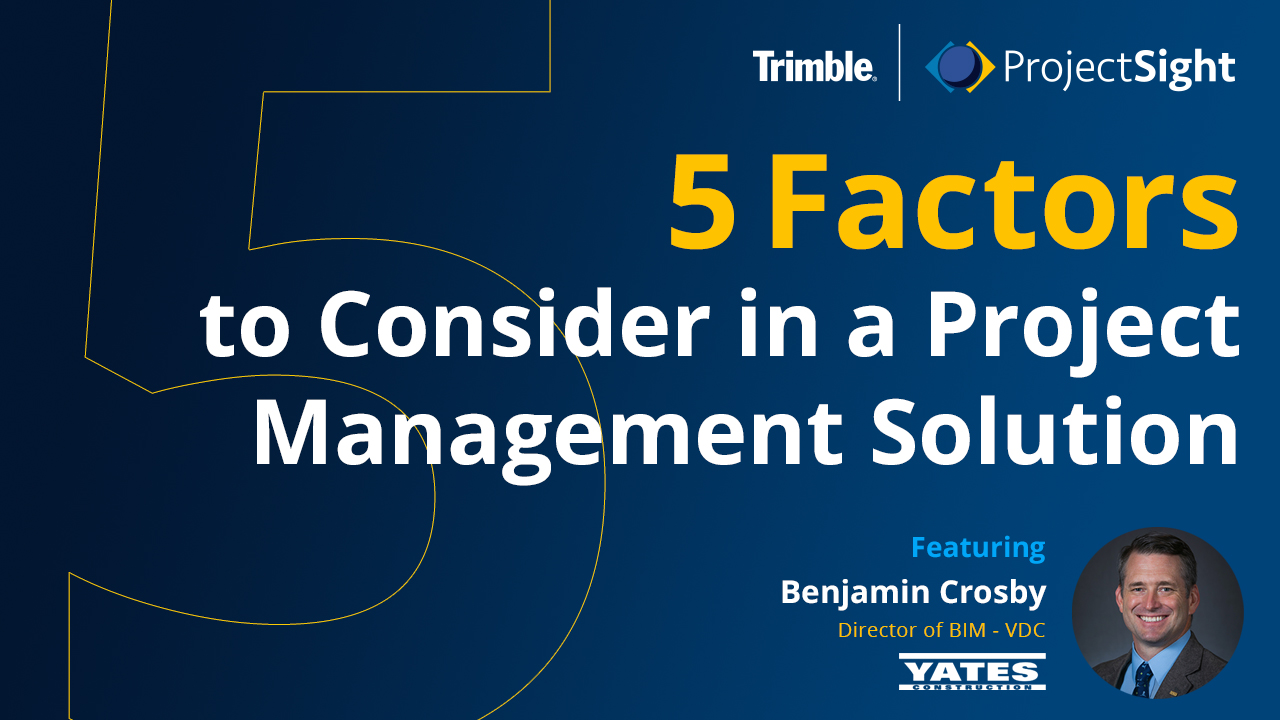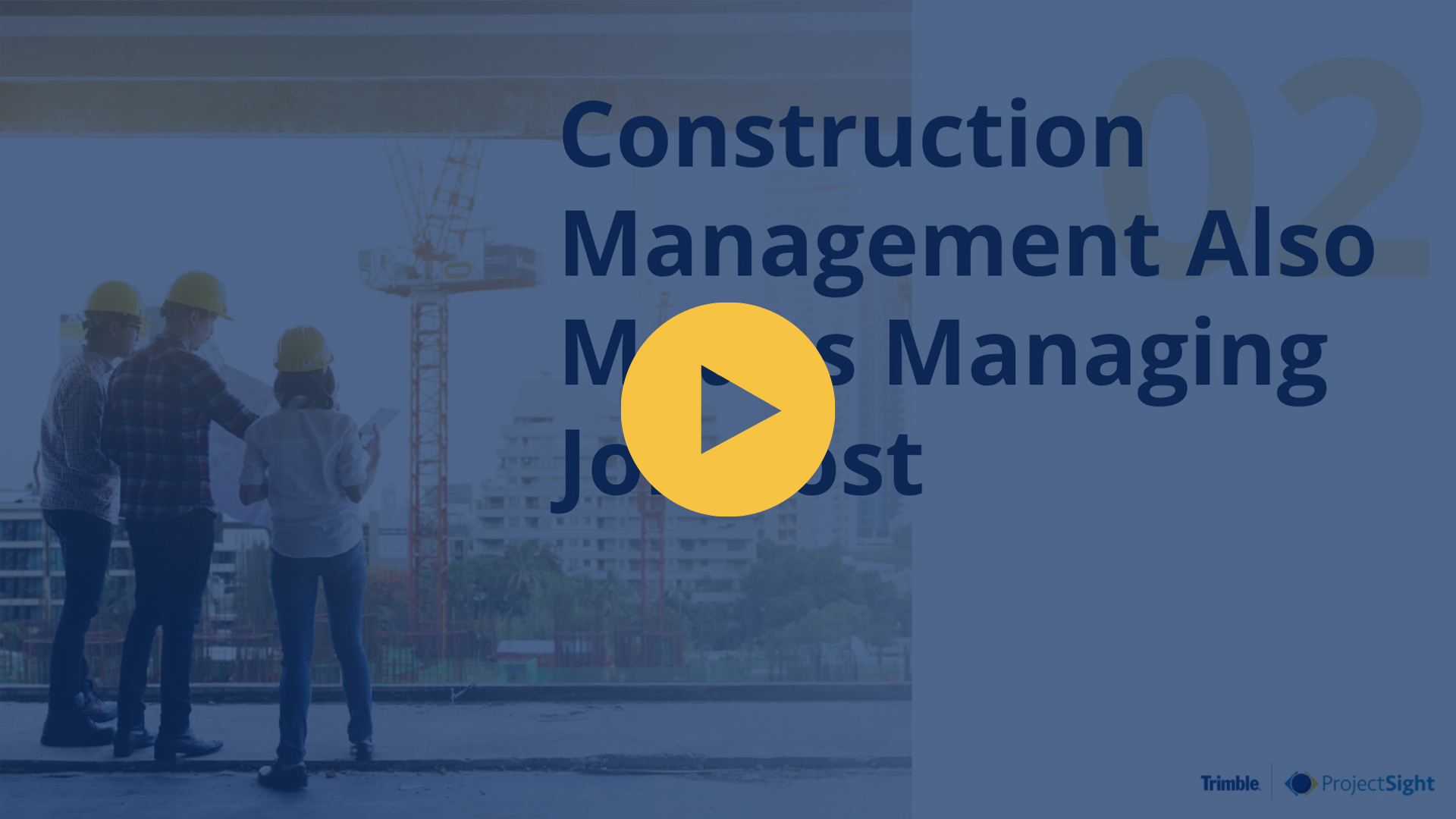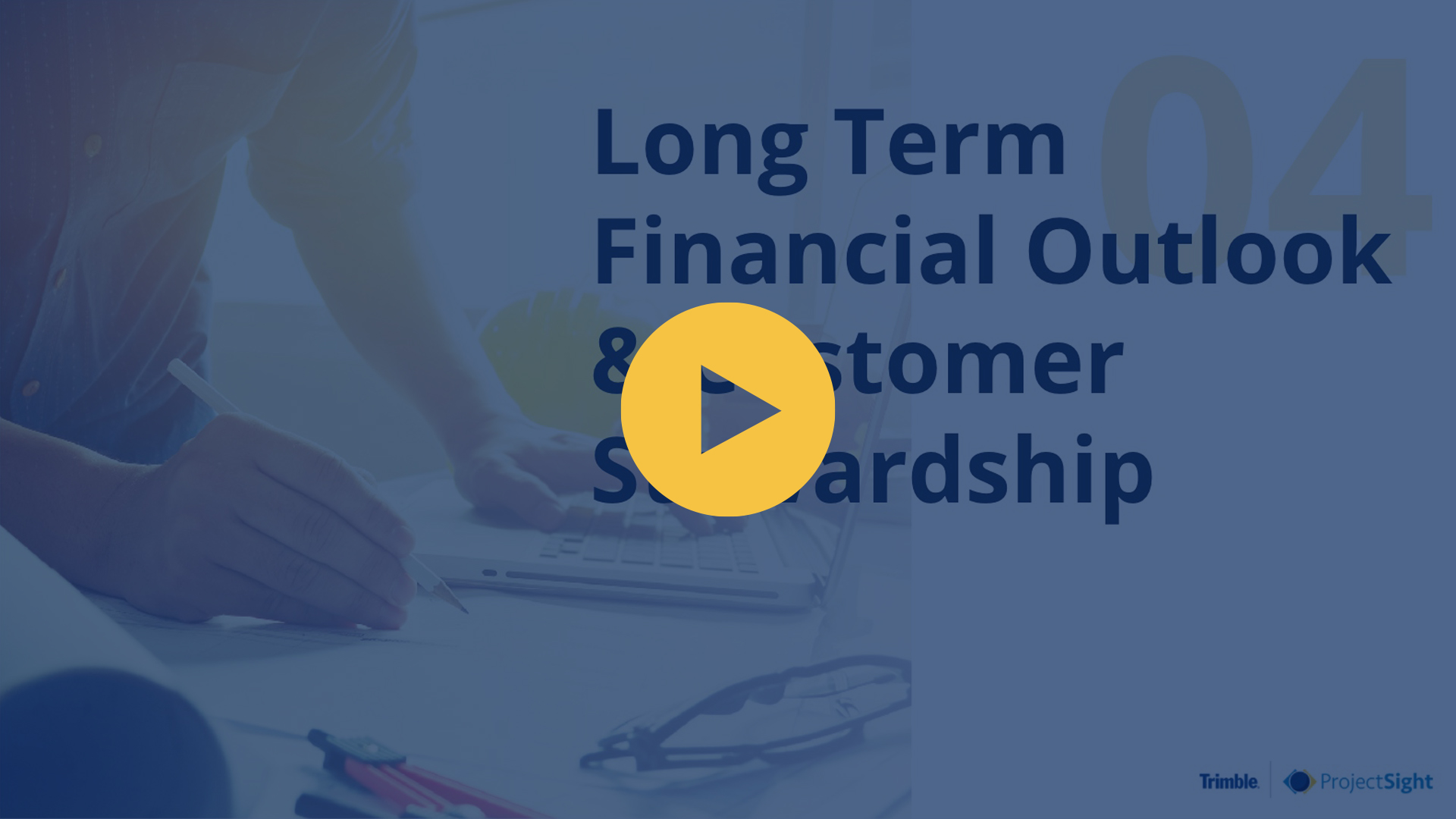Construction project management software is a broad term representing many types of software and products. Unless they ask the right questions, contractors can easily waste time and money on a solution that wasn’t designed to solve their problems. To find the best fit, consider the needs of your business and find out how the solution will meet them.

Watch the Full Webinar
We recently sat down with Benjamin Crosby, Director of BIM and VDC at Yates Construction during an Engineer News Record (ENR) webinar to discuss this very subject from the perspective of a top construction firm that is using technology to stay ahead of its competitors in a very competitive and lean industry. Yates Construction is consistently ranked among the top construction service providers in the country by ENR. The family-owned business provides an array of construction and building services in a wide variety of industries including arts and culture, civil, commercial, education, entertainment and gaming, federal, healthcare, and technology.
Considering Yates Construction’s position in the industry, it only made sense for us to learn about what features and benefits it finds to be critical when considering a construction project management solution for its entire organization. Here is what we learned and the five key questions that every contractor should ask when evaluating a construction management software solution for their business.
1. What Type of Organization was the Software Built For?

Some software solutions aren’t built for that level of interaction. “I’ve seen situations where the company wants to add trade contractors to the system and they find out it doesn’t support that many users. That breaks the communication cycle because a lot of times the RFIs and submittals are generated by trade contractors and need to be vetted by the general contractor. If they can’t send those easily, you start to have difficulties.”
If you’re transitioning from drawings to a BIM VDC process where you’re focusing on models, having an intermediate source of information is important. “You need a consolidated set of documents coming from architects and engineers that can match up with shop drawings and shop models coming from the trades or consultants,” says Crosby. “When the software is built for owners, it might not be able to handle all the RFIs because owners typically don’t want to see all that—they want statistics and big picture results.”
2. How Well does the Software Manage Budgets and Job Costs?
As a general contractor, you have to make a profit—otherwise, your company goes out of business. To do that, you have to track expenses and consider details like the scope of work, pricing, and productivity. “If all that information is one place, you’ll get a better sense of how the job is progressing,” Crosby says. Accessing that information in real-time is also important. “Then when you get an RFI, you can see it as a potential change order and get an immediate idea of how much the entire job is costing and how much change is going to be needed. Rolling all this together builds trust in the entire project.”
The resulting transparency and visibility allow people to address issues faster—because they have more information.

3. Does the Solution Support Integrations and Connected Construction?

Software integration is one piece of this puzzle. Construction management software needs to be able to integrate with ERPs, financials, and digital tools used by trades and architects. “Pulling information from all these sources and having it usable will make a huge difference in communication and productivity,” says Crosby. Connected construction tools, such as IoT sensors that detect weather conditions on a job site, should also be able to integrate with the software system. “I’m excited about all the advancements that are happening that will hopefully make daily reports obsolete. We’re moving away from filling out forms and looking at how information can be captured in real-time.”
4. Does the Provider Offer Personalized Customer Support?
Look for a software provider that works well with everyone who will be using the solution, from architects to trades to owners. “They need to work for all the parties involved so everyone will put their information there,” Crosby says. “That way it will be the hub that protects your company for years to come.”
For example, find out what their process is for an RFI that comes back only partially answered. “I see that problem regularly,” says Crosby. “Having a company that understands those issues and can walk you through the process is crucial.”

5. Do They Understand the Current Economic Situation?

In today’s economy, it’s important to be sure your software providers understand the situation. “Generally, construction activity is down across the country,” says Crosby. “A big part of today’s construction economy is about how well we can manage our risks.”
The software’s ability to tie in with financials and track changes and potential change orders is an essential component of successful risk management. “If the software helps you manage your risk better when you’re working on a faster project, that’s a tremendous value,” Crosby says. “When you look at pricing, take that kind of value into account—and how much return on investment it will yield in the long run.”




